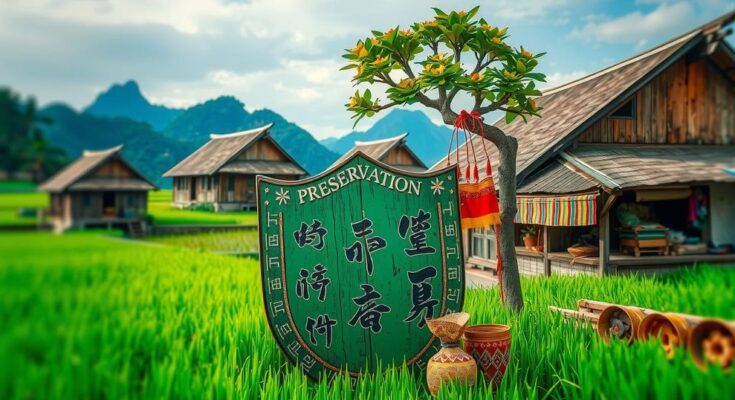A new plan by Vietnam’s Ministry of Culture focuses on preserving the intangible cultural heritages of ethnic minorities. Spearheaded by VICAS, the initiative aims to enhance socio-economic development in minority areas while promoting tourism. Key activities include research on traditional rituals and cultural practices across several provinces, enriching the nation’s cultural narrative.
The Ministry of Culture, Sports, and Tourism has approved a strategic plan aimed at supporting the preservation of Vietnam’s intangible cultural heritages among its ethnic minorities. Spearheaded by the Vietnam National Institute of Culture and Arts Studies (VICAS), this initiative is a pivotal part of a broader national program intended to stimulate socio-economic growth in minority and mountainous regions this year. This plan emphasizes connecting the preservation of cultural identities with tourism development, focusing on various regions including Lang Son, Bac Kan, Ha Giang, Bac Giang, Vinh Phuc, Thua Thien – Hue, and An Giang. Each province will engage in specific cultural preservation activities, enriching the tapestry of Vietnam’s rich cultural heritage. Starting in the last quarter of 2024, VICAS will collaborate with provincial tourism departments to implement a series of research and preservation projects designed to highlight and sustain the unique cultural expressions of these ethnic groups. The activities will include restoration efforts of traditional rituals and the integration of cultural aspects into tourism offerings. In Lang Son, traditional rituals such as the Dao people’s coming-of-age ceremony will be prioritized along with Xang Co singing practices of the San Chi. Bac Kan will focus on the unique patterns found in Dao Tien clothing. In Ha Giang, a comprehensive study of the Lo Lo community will be conducted, while Bac Giang will delve into the cultural significance of Cao Lan funeral house-making customs. Vinh Phuc will explore the Soong Co Folk Song’s place in daily life for the San Diu people, and in Thua Thien – Hue, research will document the Bo Ma Ceremony of the Co Tu people. Lastly, in An Giang, the initiative will aim to preserve the vibrant Rebana drum tradition celebrated by the Cham ethnic group.
Vietnam is a colorful tapestry of diversity, home to 53 ethnic minority groups comprising over 14 million people, representing roughly 14% of the nation’s populace. These groups are intricately woven throughout 58 of the country’s 63 provinces, each contributing unique cultural practices, languages, and traditions. Against this backdrop, the government recognizes a pressing need to support and preserve these intangible heritages, which are vulnerable to extinction amid modern development and globalization.
The newly approved plan symbolizes a significant commitment to safeguarding Vietnam’s rich cultural heritage, ensuring that the vibrant traditions of its numerous ethnic minorities are not only preserved but revitalized in a contemporary context. This initiative aims to intertwine cultural preservation with tourism, fostering socio-economic growth while paying homage to Vietnam’s diverse legacy.
Original Source: en.vietnamplus.vn



